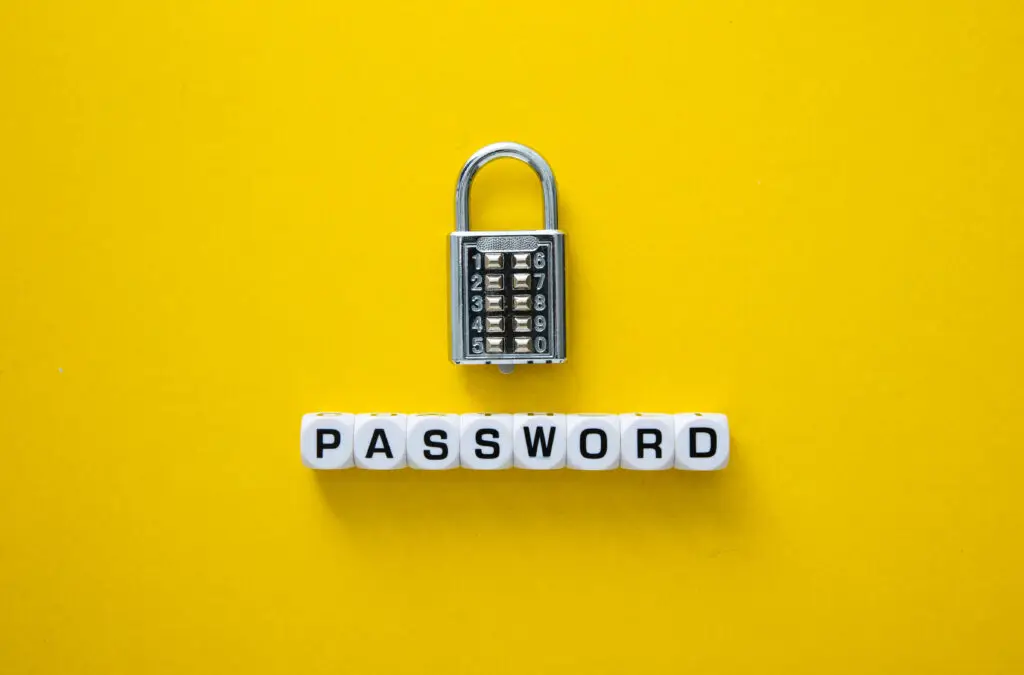A Call to Action for Stronger Password Safety

In today’s digital age, where almost every aspect of our lives is connected online, ensuring the security of our personal and professional information has become more important than ever. One of the most critical elements of this security is password safety. On World Password Day, we reflect on the importance of protecting our online data and share tips on how to create and manage strong passwords. This blog will explore what World Password Day is, why passwords are crucial, especially in the digital sector, and how you can protect yourself by maintaining password safety.
What is World Password Day?
World Password Day, celebrated annually on the first Thursday of May, is an event aimed at raising awareness about the importance of strong and secure passwords in protecting our online identities. The day was first introduced by Intel in 2013, with the goal of educating the public about the potential risks associated with weak passwords and encouraging the adoption of better security practices.
While the specific focus is on password safety, the broader idea behind World Password Day is to remind us all about the growing importance of digital security as our world becomes increasingly interconnected. On this day, cybersecurity professionals, tech companies, and individuals come together to highlight the need for robust password protection, while also promoting tools such as password managers and multi-factor authentication (MFA).
Why Is Password Safety So Important, Especially in the Digital Sector?
In the digital sector, where data breaches and cyberattacks are increasingly common, password safety cannot be overstated. Your password is essentially the first line of defence against unauthorised access to your accounts, systems, and sensitive data. From banking to social media, e-commerce, and business tools, almost every aspect of our digital lives relies on the security of passwords.
When passwords are weak or poorly managed, they create opportunities for hackers to exploit vulnerabilities and gain unauthorised access to personal or corporate information. A single compromised password can open the door to data theft, financial loss, and identity fraud. The risks are especially high in industries that handle sensitive data, such as healthcare, finance, and tech, where breaches can lead to severe consequences, including financial penalties and reputational damage.
How to Ensure You Have a Safe Password
Having a secure password is essential for protecting your digital identity. The best passwords are long, complex, and unique. Here are a few best practices to ensure password safety:
- Use Strong and Complex Passwords: A strong password typically includes a combination of upper and lower case letters, numbers, and special characters. Aim for a password length of at least 12 characters. Avoid using easily guessable information such as your name, birthday, or common words.
- Avoid Password Reuse: It can be tempting to use the same password for multiple accounts, but this significantly increases the risk if one of your accounts is compromised. Always use unique passwords for each platform or service.
- Enable Two-Factor Authentication (2FA): Whenever possible, enable 2FA, which adds an extra layer of security to your accounts. This typically involves receiving a one-time code sent to your phone or email, in addition to entering your password.
- Use a Password Manager: Password managers help you store and generate secure passwords without the need to remember every single one. They can also suggest strong passwords and fill in your login details automatically.
- Update Passwords Regularly: Set a schedule to change your passwords every few months, particularly for sensitive accounts like online banking or email. This minimises the impact of any potential data breaches.
What to Do If Someone Gains Access to Your Password
Despite our best efforts to maintain password safety, the unfortunate reality is that hackers can sometimes gain access to personal or sensitive information. Whether it’s due to phishing scams, data breaches, or weak security measures, a compromised password can have serious consequences. In this section, we will walk through a step-by-step guide on what to do if you suspect that someone has gained unauthorised access to your account. By acting quickly, you can mitigate the damage and restore your account’s security.
Change Your Password Immediately
- The first and most crucial action you should take is changing your password as soon as possible. This prevents further unauthorised access to your account and is the first line of defence when your password is compromised.
- How to change your password: Navigate to the “Settings” or “Security” section of your account, and look for the option to change your password. Most platforms will require you to enter your old password and set a new one. Make sure the new password is strong and unique to that account—do not reuse passwords from other platforms.
- Password reset through email: If you’re unable to access the account due to the hacker changing your password, most services provide a password reset option via email. Follow the instructions provided to regain access to your account.
- Use a password manager: If you’re unsure about creating a strong new password, many password managers offer password generators that automatically create complex and unique passwords for you. This is particularly helpful in ensuring you’re not reusing passwords across multiple sites, which is a common security vulnerability.
2. Review Account Activity and Logs
To ensure password safety after changing your password, the next step is to examine any recent activity on the account. This will help you assess whether any malicious actions were taken while the hacker had access.
- Check for suspicious activity: Most platforms, whether it’s your email provider, social media accounts, or banking site, offer an “Activity” or “Login History” section. Here, you can review the devices and locations from which your account has been accessed. If you notice any unfamiliar devices or locations, this could indicate unauthorised access.
- What to look for: Pay close attention to any unusual activity, such as changes to your account settings, unfamiliar transactions, messages sent from your account, or posts made on your social media. Hackers may have altered your personal information, sent spam emails, or used your accounts for malicious purposes.
- Contacting support: If you notice suspicious activity, contact the platform’s support team immediately. They may be able to assist you in tracking down how the breach occurred and what specific actions were taken by the unauthorised user.
3. Alert Relevant Parties
If your compromised password is tied to a work or business-related account, it is important to notify your colleagues, IT department, or manager as soon as possible.
- For business accounts: In a business context, a compromised account can pose a significant risk to the entire organisation. Sensitive company data, emails, financial records, and intellectual property could all be exposed. If the breach involves an email or social media account, inform your IT team so they can investigate the situation and assess whether any further action is needed.
- For financial accounts: If a hacker gains access to your bank account, online payment system, or investment platforms, notify your bank or financial institution immediately. Many banks offer 24/7 fraud protection services, and they can freeze your accounts or alert you to any unauthorised transactions. They may also assist you in securing your account and refunding any fraudulent transactions.
- For personal accounts: If the breach involves social media, email, or other personal accounts, let your friends, family, or followers know that your account was compromised. This is important to avoid the hacker using your account to send malicious messages or scams to others.
4. Enable Two-Factor Authentication (2FA)
One of the most effective ways to keep your password safety and protect your accounts from future unauthorised access is by enabling two-factor authentication (2FA). This adds an additional layer of security beyond just your password. Even if a hacker manages to steal your password, they will be unable to access your account without the second factor.
- How 2FA works: When you enable 2FA, you are required to enter not only your password but also a code that is sent to your phone, email, or generated by an authentication app like Google Authenticator, Authy, or Microsoft Authenticator. This makes it much harder for someone to access your account, as they would need both your password and physical access to your second authentication factor.
- Set up 2FA with an authenticator app: Many platforms now support the use of authenticator apps for 2FA. These apps generate time-sensitive codes that are typically valid for a 30-second window. This method is more secure than SMS-based 2FA, as text messages can be intercepted through SIM swapping. Downloading and setting up an authenticator app is usually a simple process, and most platforms provide detailed instructions on how to integrate it into your account settings.
- Set up 2FA: Most online platforms offer an easy way to set up 2FA under the “Security” or “Account Settings” section. Be sure to choose the most secure method, such as an app-based authenticator or a hardware security key (e.g., YubiKey), rather than SMS-based 2FA, which can be vulnerable to SIM swapping.
- Regularly check your 2FA settings: In some cases, hackers can also disable 2FA, so it’s important to review your settings regularly and ensure that it remains active. If you receive any alerts indicating that 2FA settings have been changed, take immediate action to restore them.
5. Monitor Your Accounts for Signs of Identity Theft
If a hacker has access to your personal information, they may attempt to use your credentials to commit fraud or identity theft. It’s important to be vigilant and monitor your accounts for signs that your identity has been compromised.
- Credit report monitoring: Request a free credit report from a major credit bureau (e.g., Equifax, Experian, or TransUnion) to check for any unfamiliar activity, such as new accounts opened in your name or inquiries that you did not authorise.
- Set up alerts: Many financial institutions and credit monitoring services offer fraud alerts that notify you of any changes to your credit report or unusual activity. These alerts can help you catch identity theft early and take action before it escalates.
- Place a fraud alert or credit freeze: If you suspect your identity has been stolen, consider placing a fraud alert or credit freeze on your accounts. A fraud alert warns creditors to take extra precautions when verifying your identity, while a credit freeze restricts access to your credit report, making it harder for identity thieves to open new accounts in your name.
6. Contact the ICO (Information Commissioner’s Office) if Necessary
- If your password breach leads to a significant data breach involving personal or sensitive information, particularly for businesses handling customer data, you may need to report the incident to the Information Commissioner’s Office (ICO).
- When to contact the ICO: The ICO is the UK’s independent authority responsible for protecting personal data and privacy. If you are a business owner or an organisation that has suffered a breach that puts personal data at risk (such as names, addresses, financial information, or any other personal identifiable data), the breach must be reported within 72 hours of discovery.
- What the ICO requires: When contacting the ICO, you will need to provide a detailed account of the breach, including what data was affected, the potential impact on individuals, the steps you’ve taken to mitigate the breach, and the measures being put in place to prevent future breaches.
- Why this matters: Failing to report a breach in a timely manner could lead to significant fines under the General Data Protection Regulation (GDPR). It’s crucial for businesses to comply with GDPR requirements, which mandate reporting of data breaches and taking proactive steps to protect customers’ personal information.
7. Report the Incident to Authorities
If the breach involves significant financial loss or a large-scale data compromise, you may want to report the incident to relevant authorities.
- Cybercrime reporting: Many countries have dedicated online fraud and cybercrime reporting portals. For example, in the UK, you can report fraud to Action Fraud, the UK’s national fraud and cybercrime reporting centre.
- Local law enforcement: If the breach involves criminal activity, such as identity theft or fraud, report the incident to your local law enforcement. They can help investigate the situation and potentially recover stolen assets.
8. Learn from the Experience and Strengthen Your Security
After dealing with a compromised password, it’s essential to reflect on the situation and take steps to ensure it doesn’t happen again to keep the password safety up. Consider the following actions:
- Review your overall security: Take this opportunity to review the security of all your online accounts, and strengthen them where necessary. This might include updating weak passwords, enabling 2FA, or using a password manager.
- Stay informed: Cybersecurity threats evolve rapidly, so it’s important to stay updated on the latest risks and protection strategies. Subscribe to cybersecurity blogs, attend webinars, and keep yourself informed about new threats and best practices for safeguarding your digital identity.
- Educate others: Share your experience with family, friends, and colleagues to help raise awareness about the importance of password safety. The more people who are vigilant about protecting their passwords, the less likely they are to fall victim to cybercrime.
Ways to Keep Passwords Safe
In addition to the previously mentioned tips, here are several other ways to ensure that your passwords remain safe and protected:
- Use Biometric Authentication: Many modern devices offer biometric security features, such as fingerprint scans or facial recognition. These can be used in place of or in conjunction with a password for added security.
- Be Wary of Phishing Scams: Phishing attacks are one of the most common ways that cybercriminals gain access to passwords. Always be cautious when receiving unsolicited emails or messages asking for login details. Verify the legitimacy of the request before responding.
- Lock Your Devices: Ensure that your phone, laptop, and any other personal devices are locked with either a password, PIN, or biometric security. This prevents unauthorised access in case your device is lost or stolen.
- Encrypt Sensitive Data: For added protection, encrypt sensitive files and data stored on your devices. This ensures that even if a hacker gains access, the data remains unreadable without the proper decryption key.
- Educate Your Family and Team Members: Password safety isn’t just about individual responsibility. If you’re part of a team or have family members who rely on digital tools, make sure they understand the importance of strong passwords and how to use them safely.
How Qualia Academy Highlights the Importance of Passwords
At Qualia Academy, we understand that password safety is not just about protecting individual accounts—it’s a critical part of securing an organisation’s entire digital infrastructure. That’s why we emphasise the importance of password security in our Digital Marketing Training courses.
In today’s digital marketing world, sensitive data is everywhere. From customer information to transaction details, digital marketers have access to vast amounts of personal and business data. A breach in security can lead to devastating consequences for clients, customers, and the business as a whole.
Through our training, we teach the importance of strong passwords for password safety, alongside other key elements of cybersecurity, such as protecting data in emails, safeguarding company assets, and using secure platforms. We ensure our students are well-versed in password best practices, including creating strong, unique passwords, using password managers, and enabling 2FA.
As part of the curriculum, we discuss the real-world implications of poor password practices, and how breaches can negatively affect both clients and businesses. By incorporating password safety into our digital marketing courses, we are empowering the next generation of marketers with the knowledge and tools they need to ensure data remains safe and secure.
Conclusion
In conclusion, World Password Day is a timely reminder that password safety is not something to take lightly, especially in our increasingly digital world. Strong, unique passwords are essential to protect our personal and professional information from unauthorised access and cyber threats. By following best practices for creating and managing passwords, and being proactive about monitoring our accounts, we can significantly reduce the risk of a breach.
At Qualia Academy, we recognise the crucial role that passwords play in safeguarding data and ensuring a secure online presence. As part of our digital marketing training, we equip our students with the knowledge and skills needed to implement robust cybersecurity measures, including strong password practices, to protect their clients’ sensitive information.
So, this World Password Day, take a moment to review your password practices, update your passwords, and make sure you’re following the best security measures to stay safe online. Your data is valuable—protect it!









